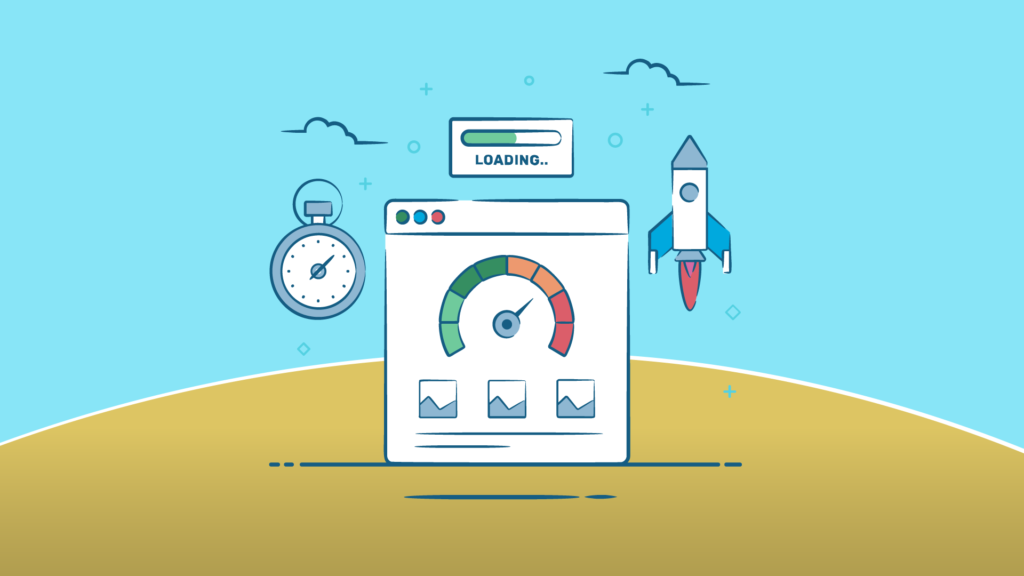In today’s fast-paced digital world, speed matters more than ever. When it comes to your website, performance optimization is not just about loading pages quickly—it’s about providing users with a seamless and enjoyable browsing experience that keeps them engaged and coming back for more. In this article, we’ll delve into the importance of website performance optimization and share some effective strategies for improving speed and enhancing user experience.

The Need for Speed: Optimizing Website Performance for a Stellar User Experience
In today’s fast-paced world, patience is a rare commodity. When it comes to websites, users expect a lightning-fast experience. A slow-loading website is like a sluggish snail trying to keep up in a cheetah race – guaranteed to frustrate visitors and send them bouncing away.
But fear not! Website performance optimization is the magic wand that can transform your website from sluggish to supersonic. By prioritizing performance, you can create a seamless user experience that keeps visitors engaged and coming back for more.
Here’s how you can become a website performance whiz:
1. Unleash the Power of Image Optimization:
Images are essential for captivating your audience, but they can also be major culprits behind slow loading times. There’s a delicate balance between image quality and size.
- Compression is Key: Utilize image compression tools to reduce file size without sacrificing significant quality. There are many free and paid tools available to help you achieve this.
- Right Format for the Right Job: Use the appropriate image format for different purposes. JPEGs are ideal for photographs, while PNGs are better suited for graphics with sharp edges and transparent backgrounds.
- Consider Resizing Images: Don’t upload gigantic images that need to be shrunk by the website. Resize images to their optimal dimensions before uploading them.
2. Embrace Website Caching:
Caching is like keeping a cheat sheet handy. When a user visits your website for the first time, their browser downloads all the necessary files like images and scripts. Website caching stores these files on the user’s device so that on subsequent visits, the website loads much faster.
- Leverage Browser Caching: Configure your website to leverage browser caching for static files like images and stylesheets. This reduces the load on your server and speeds up page load times for returning visitors.
- Consider Server-Side Caching: Explore server-side caching options that can further optimize website performance by storing frequently accessed content on the server itself.
3. Minify Your Code: Less is Often More
Website code, including HTML, CSS, and JavaScript, can become bloated with unnecessary characters and whitespace. Minification is the process of removing these extra elements, resulting in cleaner, lighter code that loads faster.
- Minify Your Assets: Utilize online tools or plugins to minify your website’s code, including HTML, CSS, and JavaScript files. This can significantly improve website performance without affecting functionality.
- Consider Code Splitting: For complex websites with a lot of code, consider code splitting. This breaks down your code into smaller chunks, allowing the browser to load only the necessary code for the specific page being viewed.
4. Content Delivery Networks (CDNs): Spreading the Load
Imagine a single waiter trying to serve an entire restaurant. That’s the strain a website can experience with high traffic. A Content Delivery Network (CDN) acts like a team of waiters strategically placed around the globe.
- Faster Delivery: A CDN stores copies of your website’s static content on servers located around the world. This ensures that users are served content from the nearest server, resulting in faster loading times.
- Reduced Server Load: By offloading static content to a CDN, you reduce the load on your main server, freeing up resources for other critical tasks.
5. Mobile Optimization: A Must for the Modern User
The majority of web browsing now happens on mobile devices. If your website isn’t optimized for mobile, you’re alienating a huge portion of your audience. A mobile-friendly website loads quickly and adapts seamlessly to different screen sizes, ensuring a smooth user experience for all visitors.
- Responsive Design is Key: Implement a responsive design that automatically adjusts your website’s layout for optimal viewing on desktops, tablets, and smartphones.
- Image Optimization for Mobile: Consider using different image versions specifically optimized for mobile devices to ensure faster loading times.
6. Leverage Browser Developer Tools:
Your browser is like a mechanic’s toolkit for website performance. Most browsers offer built-in developer tools that allow you to identify performance bottlenecks and diagnose website speed issues.
- Pinpoint Performance Issues: Use browser developer tools to identify slow-loading resources, render-blocking elements, and other performance bottlenecks.
- Analyze and Optimize: Once you’ve identified performance issues, you can take targeted steps to optimize your website and improve loading times.
By prioritizing website performance optimization, you create a user-friendly experience that keeps visitors engaged and coming back for more. Remember, a fast-loading website not only enhances user experience but can also improve your search engine ranking – a win-win for both users and your website’s success!

